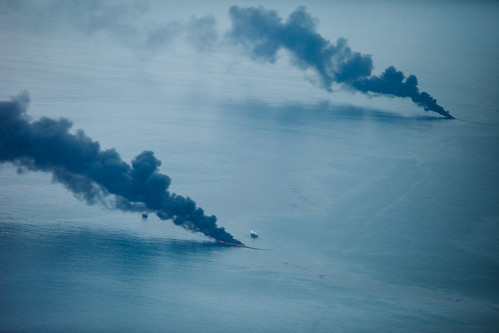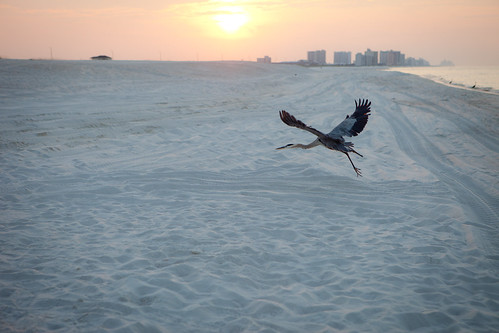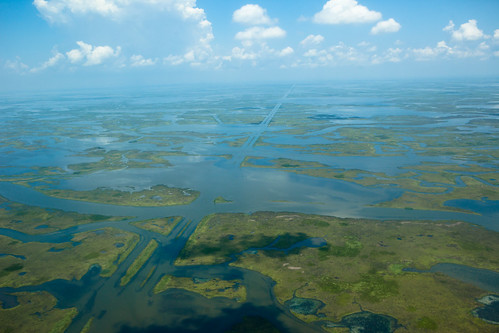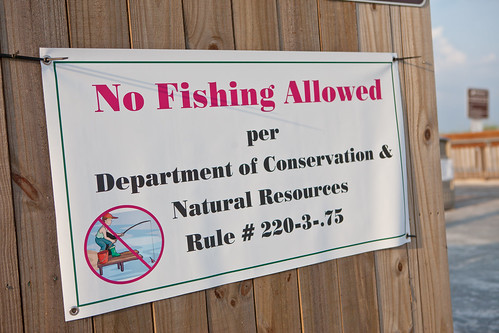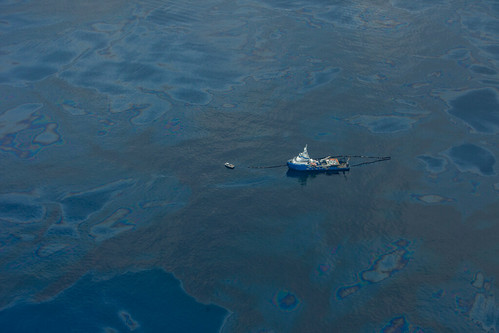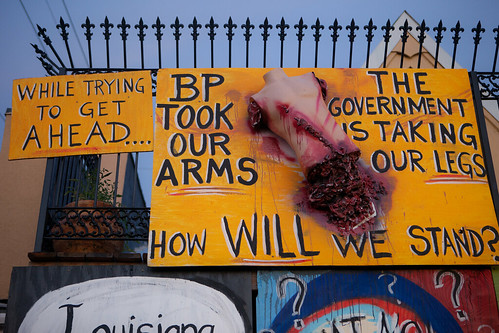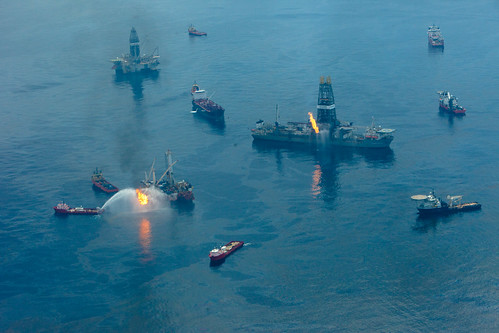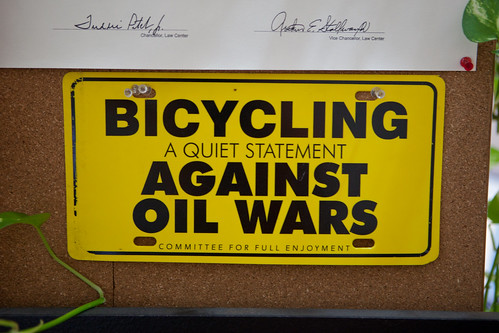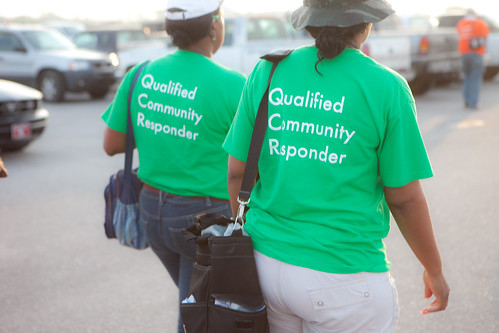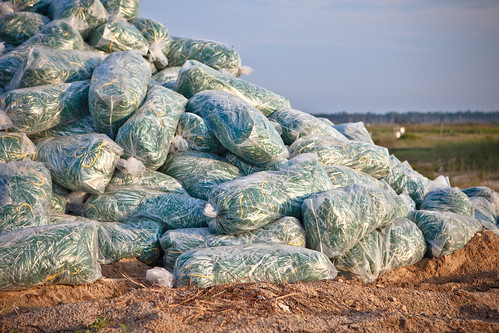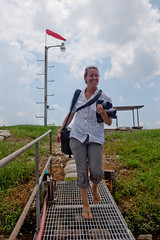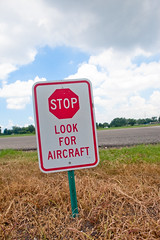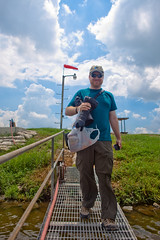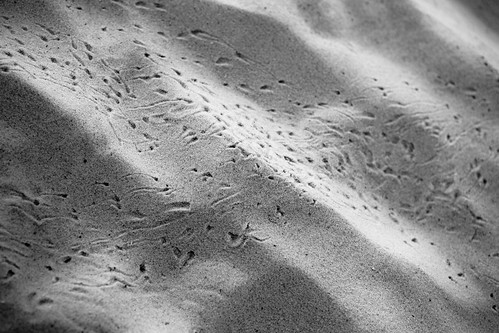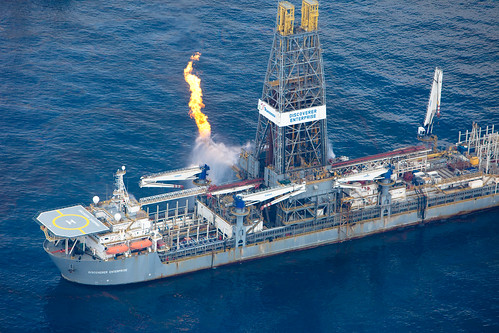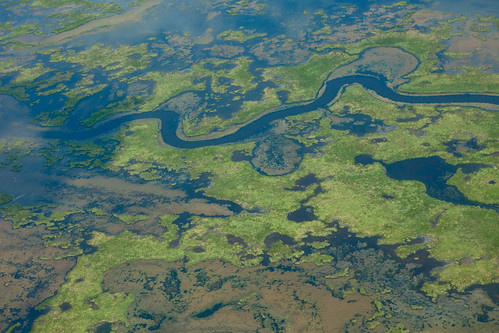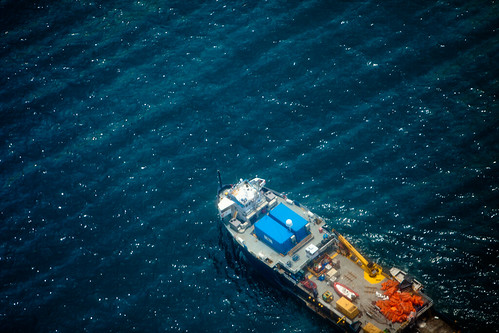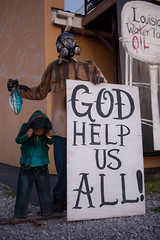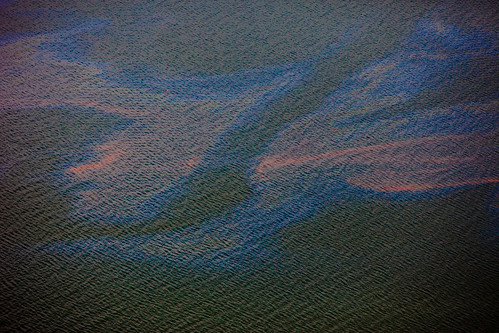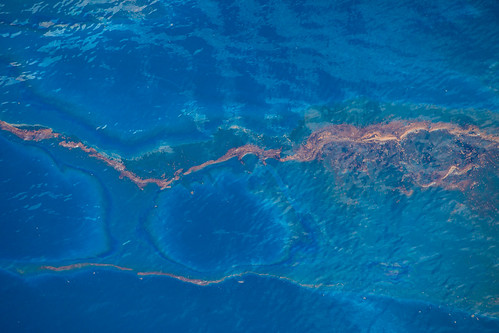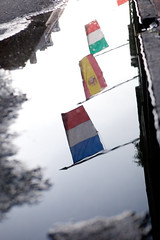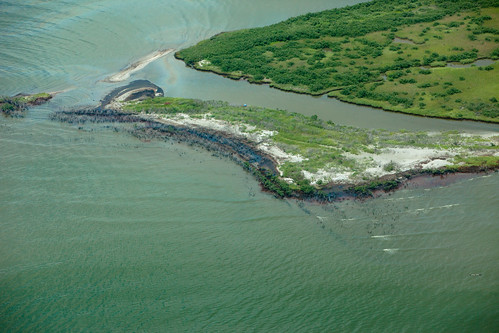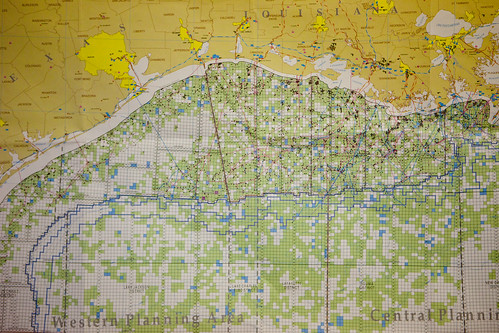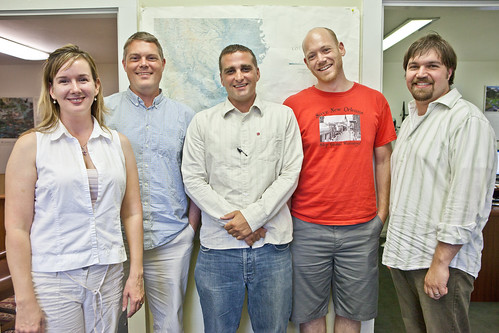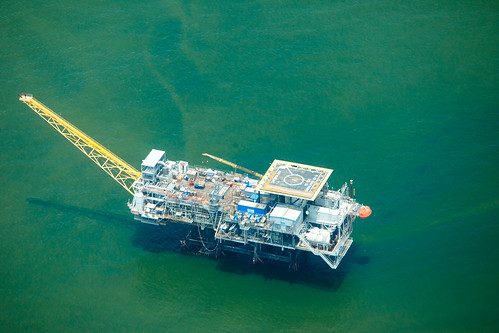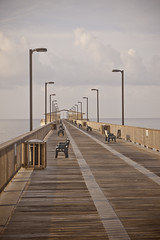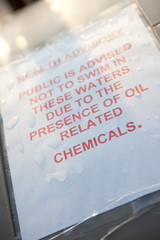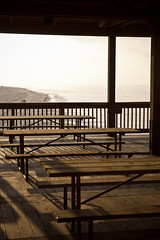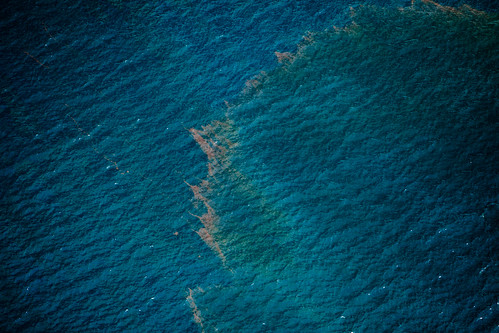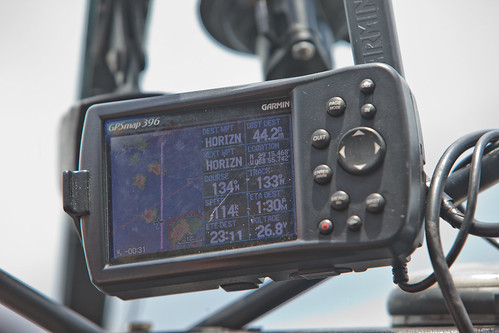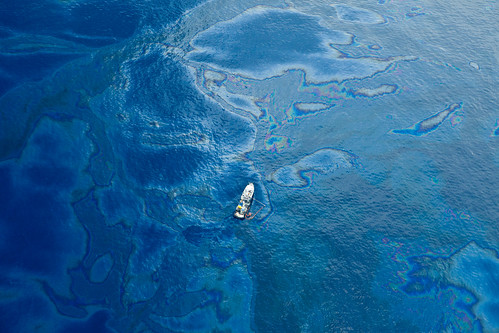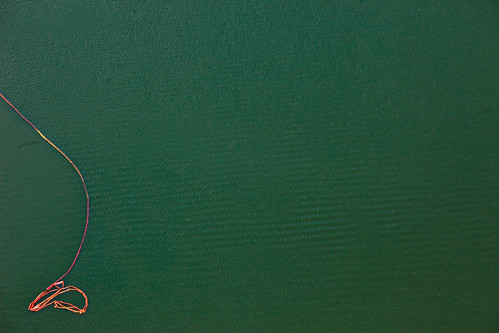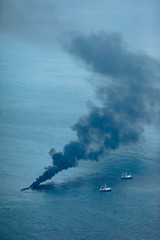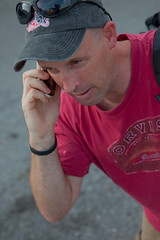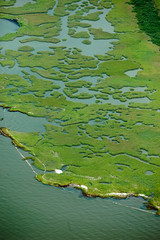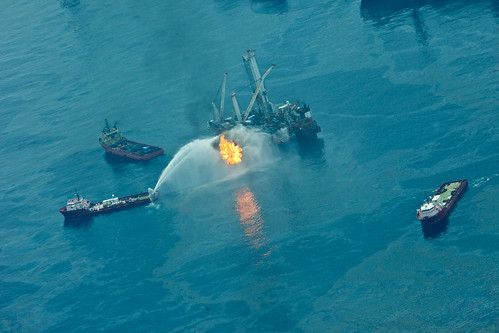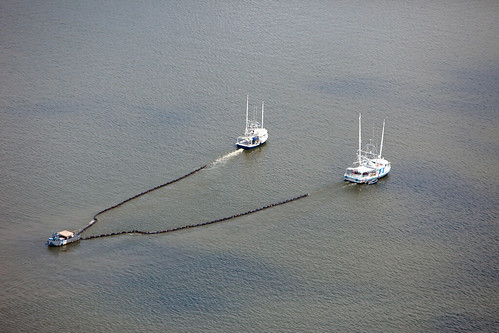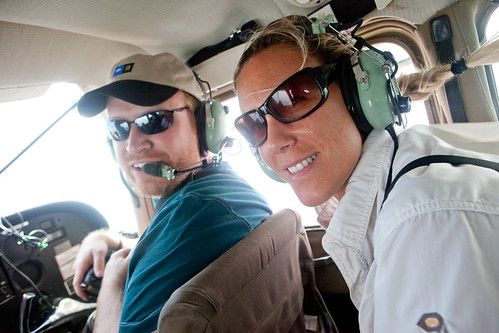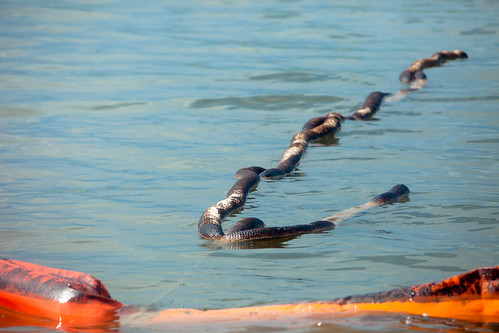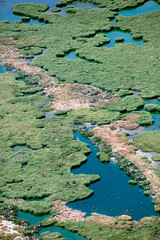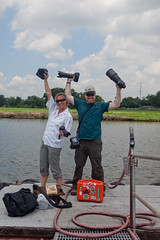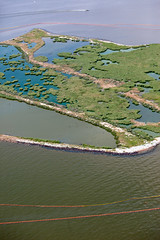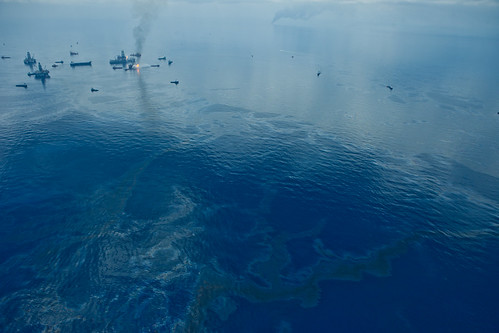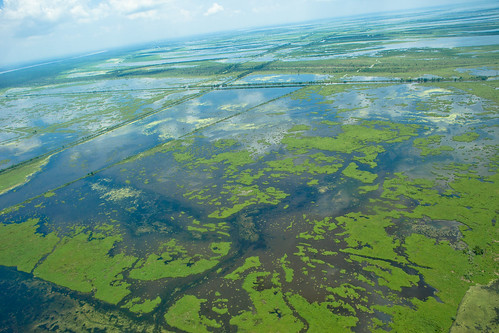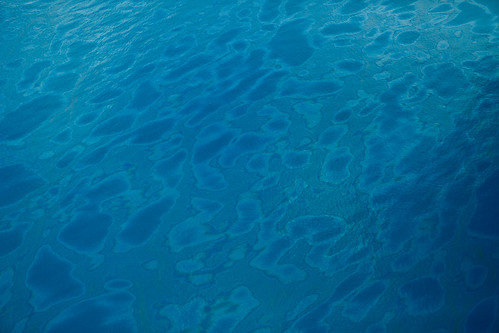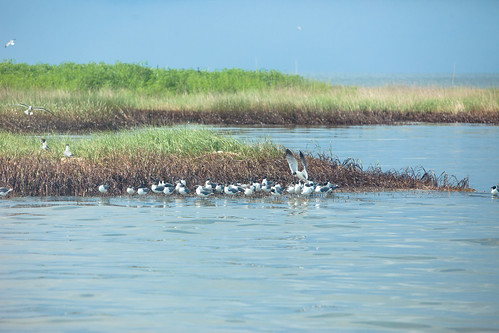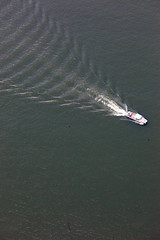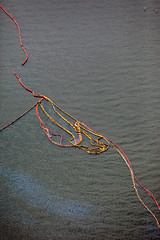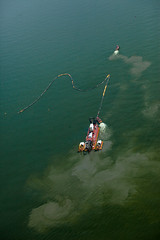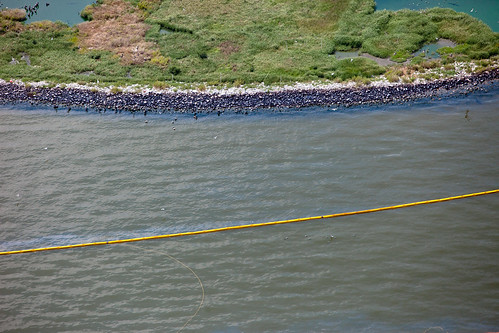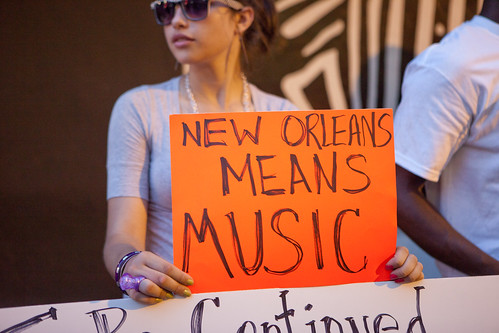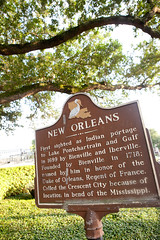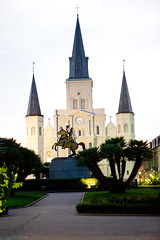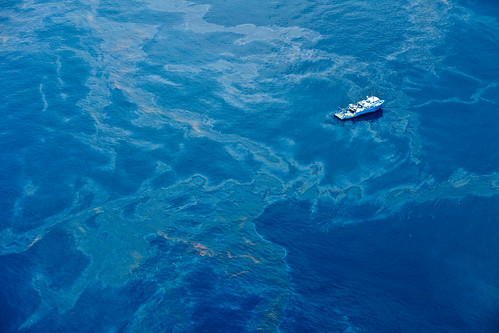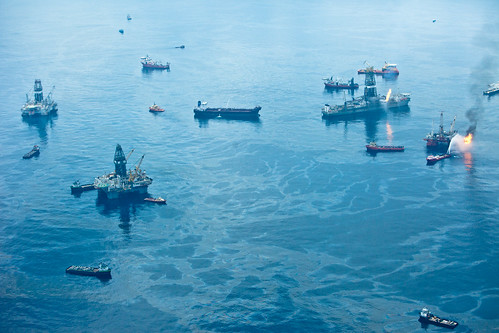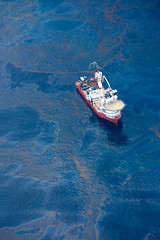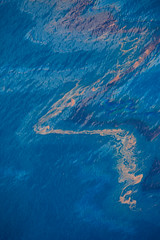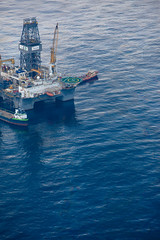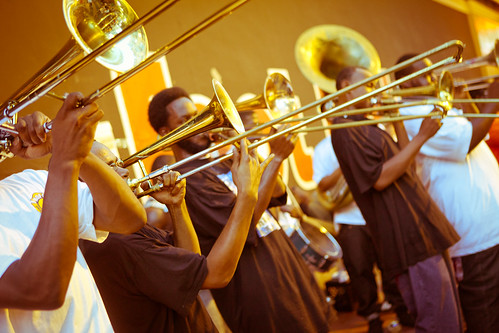Photo Essay: TEDxOilSpill Expedition Team Takes to the Skies, Documents Damage to Southern Louisiana Marshlands
The last few days have been a non-stop journey through the coastal area of New Orleans and the Southern Louisiana Marshlands for the TEDxOilSpill Expedition team. The team of photographers, videographer and writer have been exploring the land and the sky in order to understand the story of the oil crisis here in the Gulf. A couple thousand photos and multiple blog posts later, the team is gathering media coverage from a witnessing POV for the June 28th TEDxOilSpill event in Washington, DC.
In the first couple of days of the expedition, the team divided their time through Mississippi and Alabama, following the expanding oil spill coverage and documenting the communities of the Gulf Coast states that have been affected. The last few days have had a heavy focus on Louisiana, especially with the team paying close attention to the southern marshlands. Unlike the rest of the Gulf Coast beaches, these marshlands have been hit fast and hard from the unending oil spill, with devastation to the natural wildlife being particularly horrific.
On Thursday the team split ways: half of the team headed to an activist rally at the State Capitol in Baton Rouge while the other half of them headed into the air for a three hour journey to the ‘source’ of the oil spill , the Deepwater Horizon oil well. Photographers Kris Krüg, Duncan Davidson and Pinar Ozger spent the next three hours capturing some of the closest low altitude footage of the source of the oil spill, the oil rigs, the wildlife and the marshlands in the Gulf. Booking the Gulf seaplane was not an easy feat for the team but the journey with their rogue pilot produced amazing images, even if it started some air traffic control ruckus.
There is a mixture of happiness in the quality of images that have been captured but the entire experience is tinged with the monstrous realization of the whole scenario in the Gulf: this is a Disaster in the largest magnitude. Just the facts alone tally up to an insurmountable well of emotions: whole communities and livelihoods are being destroyed, environmentally the oil is eroding landscapes that are never to return, various populations of wildlife are being stranded, alive and dead, but the worse fact of all is that the oil leak has not stopped. The effects since the explosion on April 20th are merely effects of a continuous oil leak while the actual longterm devastation is impossible to even imagine.
Each of the people involved in the expedition have been swimming in emotions all the while trying to stay on top of the Gulf story as it is happening. Often times local residents in the Gulf Coastal cities, especially the more remote ones, are so eager to tell their stories with emotional distress so that the rest of the world can hear their cry. Economically workers involved in the cleanup response are found to stray away from contact with the team or any source of media, or in more rare occasions, will connect with information only in complete anonymity.
The devastation of this oil disaster has many levels of atrocity, environmental, economical and emotional. All of the national news coverage of this event has created a massive emotional sympathetic response to the Gulf Coast yet the dreadful reality is that the Gulf of Mexico does not have that luxury of sympathy. It is dying alongside its culture, communities and residents.
With a heavy heart the TEDxOilSpill Expedition has a few more days down in the Gulf of Mexico. Armed with their cameras and words, they will continue to bear witness to the struggle, the destruction and the devastation of the Gulf oil disaster.
Here are some more photos taken by Kris Krüg on the TEDxOilSpill Expedition:
The Deepwater Horizon oil well is locally known as just the “source.” Each of these large boats is in various areas of oil cleanup, like oil collection and gas burning.
A sign at the Gulf Restoration Network states a very obvious and simple way to respond to the global crisis of our dependency on oil.
Each of the states provides its own area oil relief and clean-up crews. Most of the jobs are locally held, with a few areas resorting to outsourcing the jobs from the North.
There has been much debate to what is actually in these trash bags. The up-to-date information is that these bags contain absorbant shredded material that is being used to cleanup up the oil excess.
Photographers Pinar Ozger and Duncan Davidson get ready to board the seaplane down to the Southern Louisiana marshlands.
The Gulf of Mexico is home to numerous species of birds that are being displaced, stranded or killed because of the oil disaster. Luckily these footprints on the early morning beach lay proof of healthy bird activity.
The Discoverer Enterprise is one of the processing ships surrounding the Deepwater Horizon oil well. The Enterprise is trying to process a percentage of the crude oil that is captured at the source of the leak. A few days ago oil processing came to a halt on the Enterprise after the ship caught fire from being struck by lightning.
The Southern marshlands of Louisiana have been some of the hardest hit areas of the oil spill. This particular natural environment has been gravely devastated by multiple tragedies and is unfortunately disappearing at a rate that is unrepairable.
A large boat carrying protective boom travels through the deepwater areas of the Gulf of Mexico.
Many local residents of the Gulf Coast are particularly fed up with frustration at the unresolved oil disaster. Some residents have taken to making signs and art that vocalizes their frustrations and unanswered questions.
Many local airports are refusing to fly media over areas of the Gulf that are affected by the oil disaster. Luckily the Expedition team scheduled a flight with a pilot that was welcoming to the TEDxOilSpill request.
Areas that are affected by the oil leaking from the Deepwater Horizon well are often discolored and iridescent. The color of the oil ranges from deep orange, brown, dark blue and even blood red.
Much of the Louisiana marshlands are made up of clusters of islands. Since the April 20th start of the oil leak, these islands have been completely isolated by protective boom to prevent surface oil from washing upon the shores.
Crude oil floats to the surface of the Gulf of the Mexico.
The city of New Orleans is desperately trying to stay high spirited, despite the lack of tourism and downfall of their local economy.
The exterior beaches of this small Southern Gulf island are drenched in dark, black crude oil. Often times there are too many small islands for the limited amount of cleanup workers to attend to.
This grid map located in the offices of the Gulf Restoration Network is a cohesive collection of all of the oil wells located in the Gulf of Mexico. When contextualized in this format, the numbers can be staggering.
The campaign directors and communications managers of the Gulf Restoration Network in New Orleans, Louisiana.
This oil production platform was one of many seen on the plane ride out to the source.
The empty piers and beaches in Alabama are covered with signs that advise to stay out of the water due to the harmful chemicals used in oil spill cleanup.
A large wave of crude oil spreads rapidly through the Gulf of Mexico.
The TEDxOilSpill Expedition team covered over 300 miles in their journey on the seaplane.
A lone ship navigates through the devastated surface of the Gulf of Mexico. The rainbow discoloration of the water is resulting effect of the chemicals that are being used in the oil spill cleanup.
For weeks workers have been laying two different kinds of protective boom around Gulf Coast shores in order to prevent any oil from washing upon shore. Unfortunately the boom is susceptible to displacement from extreme weather like thunderstorms and heavy winds.
Oil collections are burned on the surface; Darron Collins, WWF writer, answers interview questions about wildlife cleanup; Southern Louisiana marshlands are tinged with oiled beaches.
A casualty that has formed by weeks upon weeks of the leaking Deepwater Horizon is the formation of excessive plumes of underwater gas. This gas is burned by large ships at the location of oil spill.
Fisherfolk, who were out of work due to the oil spill, were often hired as skimmer boats. Collectively two boats would drag boom across the surface of the Gulf, collect oil and then set the crude oil on fire.
Photographers Duncan Davidson and Pinar Ozger enjoy a moment in their seaplane flight.
The smaller white absorbant booms look completely blackened by the onslaught of crude oil collecting at the water’s surface.
The beauty of the disappearing marshlands is more than a loss of an environment. It is a loss of a staple in Louisiana culture.
Just on the outskirts of the Deepwater Horizon source, a large dark cloud of oil collects on the water’s surface.
The Louisiana marshlands have been a main source for scouting oil lines and transporting oil industry related machinery. While nature has carved out organic pathways in the marshlands, all of the straight pathways were manmade by the oil industry.
The Gulf of Mexico has the familiar look of soapy water. This is an effect of the chemicals that are being used in the cleanup effort.
A large flock of Laughing Gulls stand next to heavily oiled marsh grasslands. These marshlands are the nesting grounds to hundreds of birds.
Various types of boats are scattered all over the Gulf of Mexico to help with all areas of the oil spill cleanup effort.
This entire oil beach is covered with Brown Pelicans. With such horrific timing the Brown Pelican was released off of the endangered species list just 6 months ago.
Despite economic downfall the city of New Orleans has a city heritage that is deep rooted in its musical culture. The lively streets of the city are filled with musicians playing in clubs and on the street corner. The future of street musicians is in serious jeopardy by new city laws that extend noise curfews in certain areas.
The architecture of the city of New Orleans is unlike any of the rest of the nation.
It is relatively unknown to the public how pervasive the oil industry and its growth have taken over the Gulf of Mexico. Each of these black dots is a an individual oil rig.
Photographer Duncan Davidson shoots some stills from the open window of the seaplane.
Another lone boat makes its way through oil-laden ocean waters.
The lack of direct response to the deepwater collection of crude oil is unsettling and overwhelming.
The Deepwater Horizon well has been leaking for exactly 60 days straight. Every attempt to relieve the leak or even completely seal it have failed miserably. In the end, the integrity of the well is falling which further complicates any future attempts of completely stopping the leak.
Ending on a somber but happy note: this is the Bourbon Street Brass Band whose ten plus members are working street musicians. This was their last night playing music without a legislated curfew on the corner of Bourbon and Canal Streets. Despite the emotional state of the city, these musicians carried their spirit strong and proud.
The TEDxOilSpill Expedition team has a few more days left in the Gulf of Mexico. Please check back for more photos and witness information around the developing understanding of the Gulf oil disaster.
(Photography by Kris Krug.)
For more information:
Help Support the TEDxOilSpill Expedition Team
Static Photography heads down to the Gulf with TEDxOilSpill Expedition
TEDxOilSpill photos by Duncan Davidson
TEDxOilSpill photos by Pinar Ozger
